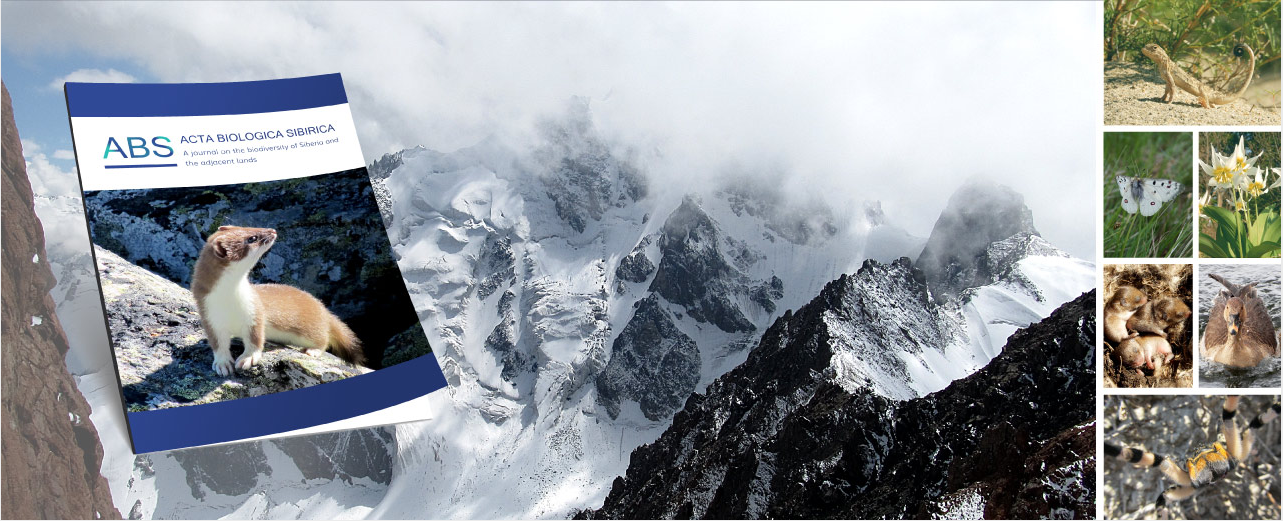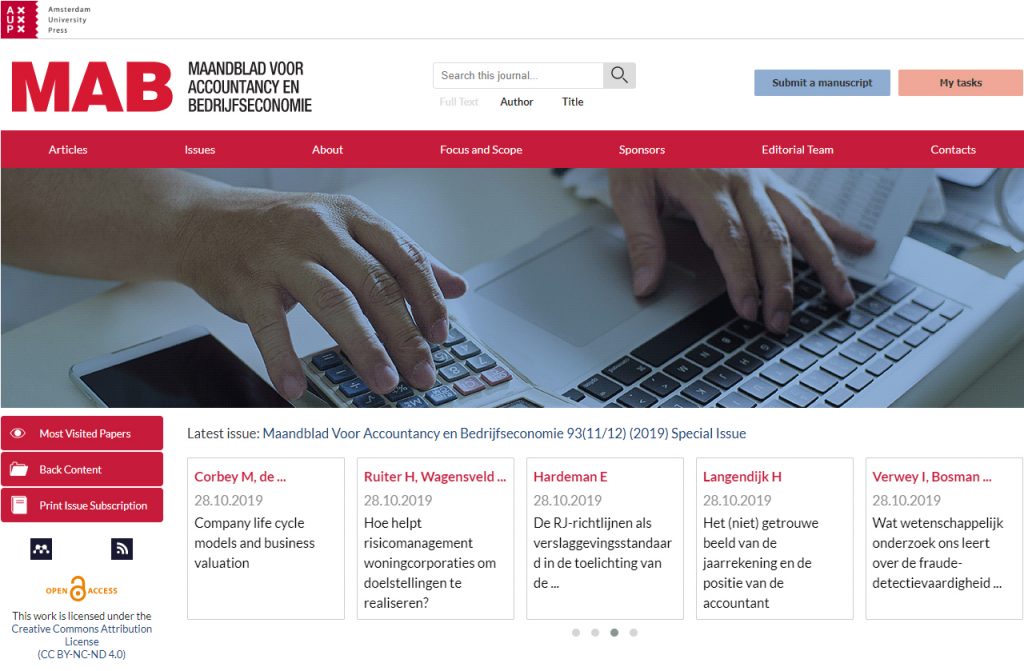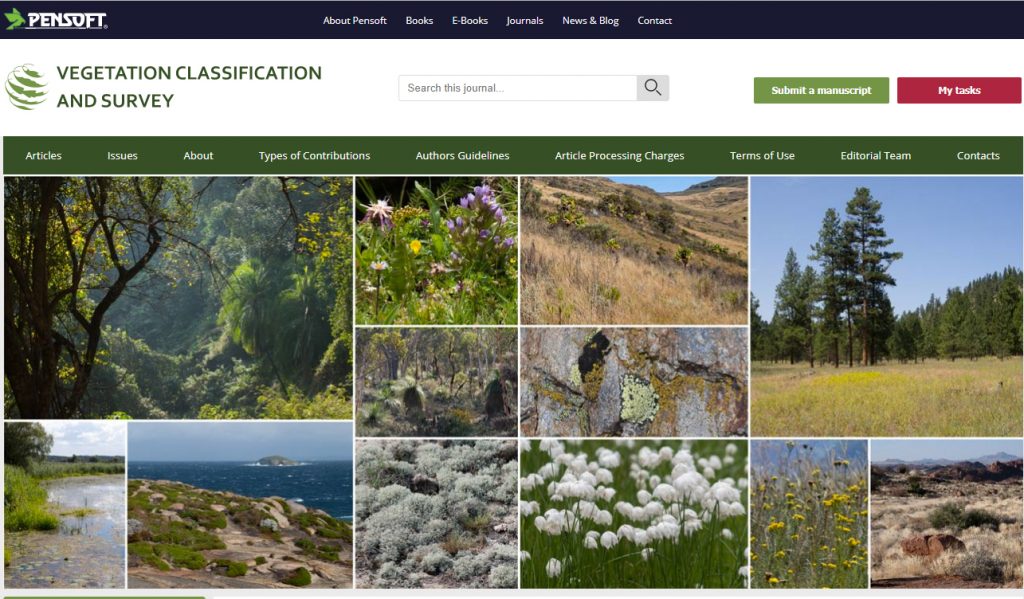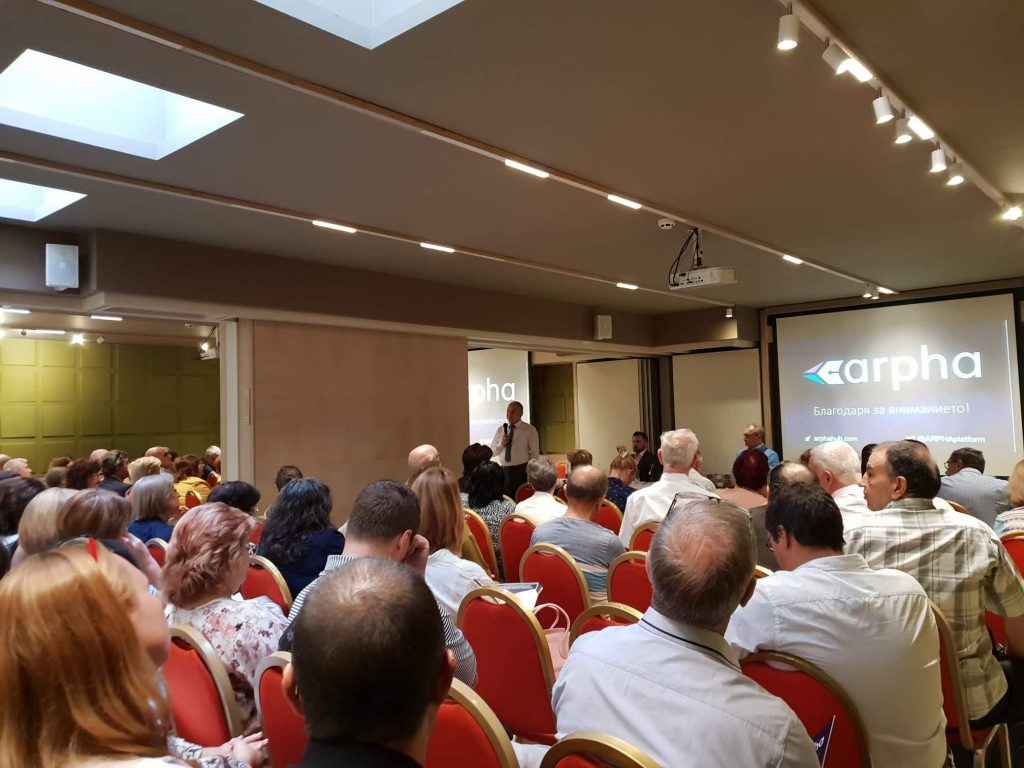Last summer, the International Association for Vegetation Science (IAVS) took the decision to launch a gold open-access academic journal, titled Vegetation Classification and Survey (VCS). Then, IAVS signed a contract with the scientific publisher and technology provider Pensoft and its self-developed innovative, fast-track scholarly platform ARPHA.
Now, VCS is officially online with the publication of its first six research articles and an exhaustive editorial, written by its four Chief Editors: Prof Dr Florian Jansen, Dr Idoia Biurrun, Prof Dr Jürgen Dengler and Dr Wolfgang Willner. They explain the mission and key features of the new journal. They also address the advantages and challenges of Open Access and share the ways VCS is to handle those.
VCS focuses on vegetation typologies and vegetation classification systems, their methodological foundation, development and application at any organisational and spatial scale. No restrictions are imposed on the methodological approaches used.
Apart from original research papers that develop new vegetation typologies, the journal publishes applied studies that use such typologies, for example, in vegetation mapping, ecosystem modelling, nature conservation, land use management, or monitoring. Particularly encouraged are methodological studies that design and compare tools or algorithms for vegetation classification and mapping, vegetation databases and nomenclatural principles. Papers dealing with conceptual and theoretical bases of vegetation survey and classification are also welcome.
“We are delighted to welcome the latest journal by IAVS to the families of ARPHA and Pensoft. We are eager to support this wonderful Open Science initiative to facilitate access and uptake of research in this emerging field of vegetation science,”
comments Prof Lyubomir Penev, founder and CEO of ARPHA and Pensoft.
Amongst the appealing features of the new journal are its two permanent special collections: Ecoinformatics and Phytosociological Nomenclature. The former invites papers presenting vegetation-plot databases and other ecoinformatics data sources relevant for vegetation classification as well as concepts, methods and tools for using these, while the latter focuses on nomenclature issues of syntaxa.
Another novelty introduced by VCS is the implementation of double-blind peer review meant to reduce potential biases in academia.
***
Proving the international focus of VCS, the first published articles cover research from five continents.
A Chinese study, conducted by the team of Dr Cindy Q. Tang (Yunnan University) analyses the forest structure, regeneration and growth trends of the commercially, culturally and economically important Yunnan pine tree.
The research team of Maged Abutaha (Desert Research Center) provides the first phytosociological classification of the vegetation units of Gebel Elba – an important arid mountain in Egypt – and the environmental factors controlling their distribution.
In their paper, Dr John Hunter (University of New England) and Vanessa Hunter use unsupervised techniques to produce a hierarchical classification of montane mires within the New England Tablelands Bioregion (NETB) of eastern Australia.
A national-scale phytosociological research of freshwater lake vegetation in Greece was conducted by the team of Dimitrios Zervas (Greek Biotope/Wetland Centre).
A Finite Mixture Model is proposed as an additional approach for classifying large datasets of georeferenced vegetation plots from complex vegetation systems by a large research team, led by Dr Fabio Attorre of the Sapienza University of Rome.
A description of the remaining native vegetation of the Espinal province in central Argentina, presented by a research team, led by Dr Sebastián Zeballos (Instituto Multidisciplinario de Biología Vegetal, UNC-CONICET), calls for conservation measures to be taken to preserve the remaining forest patches. They also urge for the establishment of new protected natural areas.
“We would like to see more profound vegetation studies from species-rich regions, from both natural and anthropogenically influenced vegetation types,”
say the editors.
***
Thanks to support from IAVS, VCS will be offering particularly attractive article processing charges (APCs) for submissions during the first two years. Moreover, significant discounts are available for IAVS members, members of the Editorial team and authors from low-income countries or with other financial constraints.
***
Follow Vegetation Classification and Survey (VCS) on Twitter and Facebook.
Check out the official blog of the International Association for Vegetation Science (IAVS), where authors in any of the three IAVS journals are invited to submit blog contributions providing further insights into their work.
























